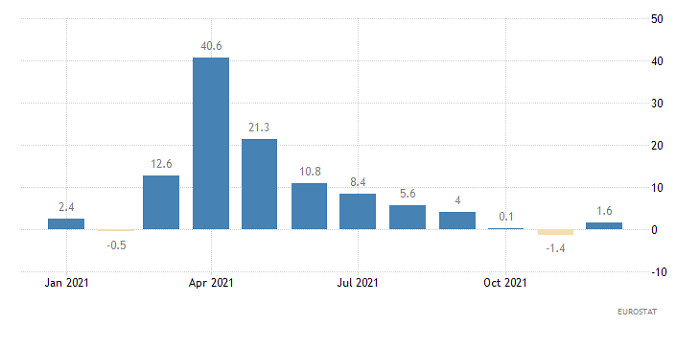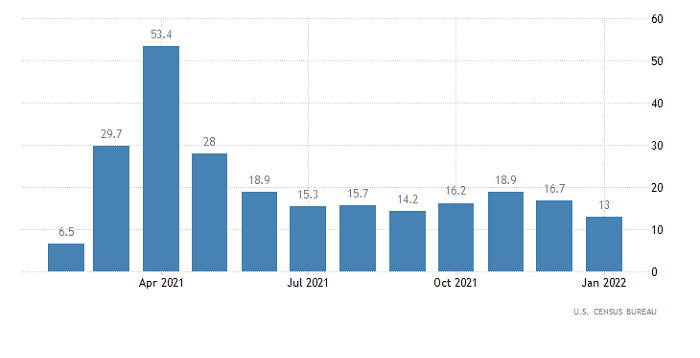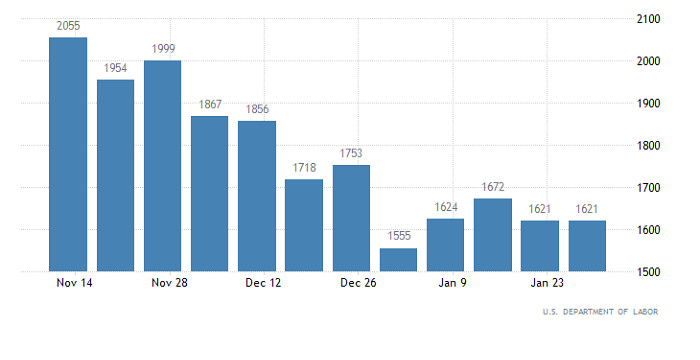
The fact that a -1.4% decline in industrial production in Europe was replaced by a rise of 1.6%, while the decline is expected to slow down to -0.6%, explains the initial rise in the single European currency. However, by the opening of the US trading session, it returned to the values it had before the release of data on industrial production. Largely for the simple reason that industry data is still of secondary importance.
Industrial production (Europe):

Nevertheless, the dollar was expected to strengthen with the opening of the US trading session. However, instead, the US currency began to lose ground. The reason was the data on retail sales, the growth rate of which, on an annualized basis, slowed down from 16.7% to 13.0%. A slowdown of only up to 15.0% was expected. Such a strong difference frightened investors and they continued to get rid of dollars. But after a while everything went back to normal. More precisely, at the opening of the Asian session, market participants remembered the effect of a low base, which distorts the annual data, and finally paid attention to the monthly ones. And for the month, sales increased by 3.8%, instead of the expected 1.5%. So in the end, the dollar returned to the values it was at before the US trading session opened.
Retail Sales (United States):

Unlike yesterday, today the macroeconomic calendar is almost empty, and the only noteworthy thing is the claims for unemployment benefits in the United States. It's just that they don't affect anything. Due to extremely minor changes. Thus, the number of initial applications should decrease by 3,000, and the repeated by another 4,000. The changes will be purely cosmetic. This is clearly not enough to set the market in motion.
Number of retries for unemployment benefits (United States):

The EURUSD currency pair in the rollback stage returned the quote to the previously passed level of 1.1400. The move has led to a realignment of trading forces after a precipitous decline over the past week. As a result, the level of 1.1400 plays the role of resistance, which has a positive effect on the volume of short positions.
The RSI technical instrument is moving in the lower area of the 30/50 indicator in a four-hour period, which may signal that the market is still interested in a downward move.
The MA moving lines on the Alligator H4 indicator cross each other, which indicates the completion of the rollback stage.
Expectations and prospects:
Based on the price behavior within the control level of 1.1400, we can assume that the downward interest is still relevant in the market. The rebound from resistance brought the quote back below 1.1350, which leaves a chance for a full recovery from the recent pullback. The main signal about the prolongation of the downward cycle will come from the market when the price is kept below the value of 1.1260.
An alternative market development scenario will be considered by traders if the price stays above the 1.1400 level in a four-hour period.
Complex indicator analysis gives a sell signal based on the short-term and intraday periods due to the price rebound from the resistance level. Indicators in the medium term indicate a downward move, which is in line with the global trend.